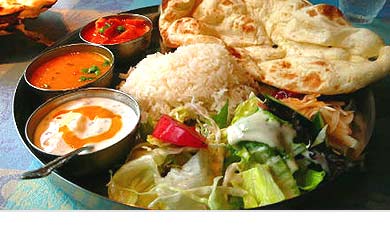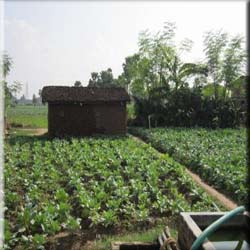CULTURE IS THE ART OF LIVING
The history of Bihari dates back to three millennia whose origins are of Indo-Aryan ethnic group. Based on the origin and the relationship the state of Bihar is divided into castes and sub castes. The people of Bihar had long been under the fetters of superstition but modern reasoning is making the way for a reasonable society. The Bihari languages include Magahi, Bajjika, Bhojpuri, Maithili, Hindi and Urdu.
The culture of Bihar can be best expressed as comprising the following: ORIGIN AND ETHINICITY
A group of proposers from Nepal belonging to the Madheshi identity state that Bihari is a technical term that excludes homogenous peoples of Uttar Pradesh, Jharkhand and Terai-Madhesh. Thus it is believed that the Madheshi from Madhyadesh is the apt word for the ethnic group of which Bihari and several closely related linguistic groups like Awadhi, Bundeli, Bagheli, etc. could originate from. The Bihari's are divided into five castes and they are the Brahman, Bhumihar, Rajput, Banias, and Kayastha. Among these castes the Kayastha and the Banias are the most dominant castes of the Biharis. Brahmans are the most superior among the castes in Bihar; whereas the Bhumihars are considered to be socially inferior. Ahirs, Kurmis, Koiris are the group of people who own land. There are small counts of scheduled caste people in Bihar and they are Bhumji, Chamar, Dhobi, Dom, Dusadh, Musahar, Nat and Pasi. CULTURE
It is believed that Bihar is one of the oldest inhabited place in the country and the third largest state in India. Bihar is valued highly with rich culture and heritage and is home to many native art forms. The culture of the Biharis is greatly influenced by the pilgrimage centers of this area which includes almost all religions. The origin of Buddhism religion took place in Bihar and it is also the place where one of India's major dynasties namely the Maurya dynasty originated. Thus Bihar is noted for its rich cultural heritage for it houses many universities, and historically and culturally valued places. The Biharis is excellent in their arts and crafts and are known for their Madhubani Painting which is exclusive to the state. The features of these paintings are that they are done with coloured paste made with rice powder. This painting is supposed to be very indigenous because it was at the time of Ramayana, that Janak King asked his men to draw Madhubani Painting on the walls depicting the marriage of Ram and Sita. But now the Biharis do these paintings even on clothes and canvases using twigs, brushes, fingers, matchsticks and nib pens. Lot of geometrical patterns are added in these paintings. Even now special occasions like festivals, religious events, birth, Upanayanam and marriage are not complete without these paintings. SOCIAL CUSTOMS AND TRADITIONS
Biharis with a rich cultural heritage is blended with major epics like Mahabharata and Ramayana and the state is a land to major religions. The Biharis are noted for their traditional Madhubani paintings. The people are also very good at traditional arts and crafts like hand-painted wall hangings, wooden stools, miniatures in paper and leaves, stone pottery, bamboo, leather goods and applique work. The mud walls of some places like Saharsa, Muzaffarpur, Vaishali, Darbhanga, Samastipur, and Bhagalpur are also adorned with Madhubani paintings. The Biharis celebrates the festival of Chaath dedicated to Sun God with major pomp and it usually begins on the fourth day of the month of Kartik Shukhla Paksha which falls either in the month of October or November. The Chaath festival is considered to be very holy among the Biharis and is celebrated for at least four days. Other festivals celebrated by the Biharis are Deepawali, Shravani Mela, Teej, Chitragupta Puja, Makar Sankranti, Saraswati Puja, Holi, Eid-ul-Fitr, Eid-ul-Adha, Muharram, Kali Puja, Ram Navami, Rakshabandhan, Maha Shivaratri, Durga Puja, Lakshmi Puja, Christmas, Mahavir Jayanti, Buddha Purnima, Guru Purab and Bhai Dooj. COSTUMES
Though western outfit are getting quite popular among the rural and urban population in Bihar, the traditional costumes of the Biharis always has its ethnic values. Men's traditional costume includes dhoti, kurta, and kharaun (wooden sandal).Saree is the traditional attire for the women and especially saree worn in "Seedha Aanchal" style is quite famous. The women of Bihar have also started wearing the urban outfit like the salwar kameez."Chhara","Hansuli","Kamarbandh" are some of the traditional Bihari jewelries. Turbans commonly known as Paag are also a part of the traditional costume of men of Bihar, which is supposed to mark the status of the man wearing it. CUISINE

OCCUPATION

The Biharis are also noted for the production of silk from the Bhagalpur area. Cane weaving is also practiced by the Biharis for the area is rich in hard wood timber, saal and sakhua.


